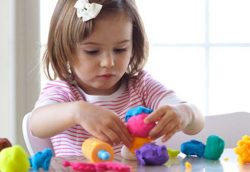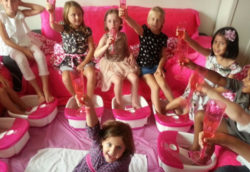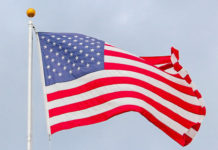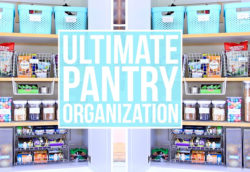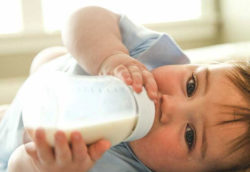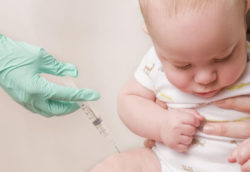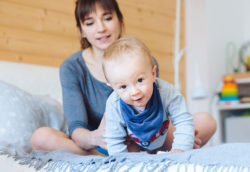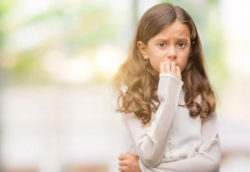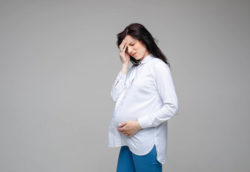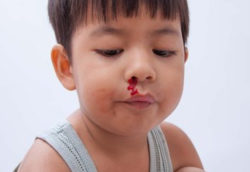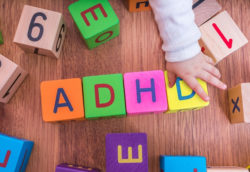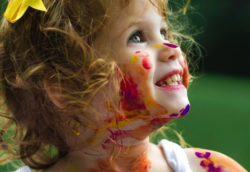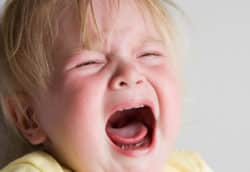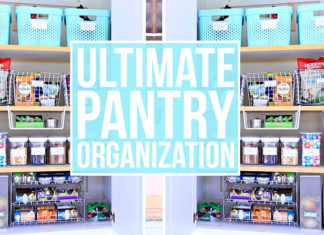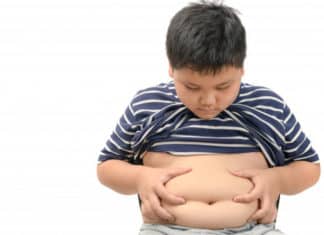Comforting your baby is one of your foremost priorities to do. Pacifiers for babies are indeed very helpful. While some infants like being rocked and cuddled, some try to suck their thumb and pacify themselves. The decision to use a baby pacifier or not to use is completely yours.
However, you must know that giving a pacifier to your baby interferes with the breastfeeding pattern. Pacifiers or bottles should not be introduced to kids early as it could establish confusion between the nipples. You must know when to give a baby pacifier. Are pacifiers really OK for your baby though? You must understand the pros and cons of a pacifier for your baby.
How many of you faced the situation where you feed the baby, let them burp, change their diaper and cuddle them but still find them fussy and crying non-stop. When nothing works, the baby pacifier does help to calm them and let them relax for a while. But have we known the baby pacifier side effects?
What is a Baby Pacifier?

A pacifier is a plastic, silicon or rubber material nipple given to a kid to suck upon. A standard appearance that is put in the baby’s mouth which has a teat, handle and mouth shield. Usually, the handle or the mouth shield is big enough for the kid to choke on it, or to swallow it.
What is a Good Age to Take Away a Pacifier?

Pacifiers are an artificial type of nipples for the baby to put in their mouth and soothe. It is recommended that these pacifiers should be avoided to be given to the baby until the first 3-4 weeks. Until the supply of milk from the mom is well established, the baby is better off without a pacifier or until the 6-week growth spurt is over. This helps the mom not to lose the breast stimulation by the kid using a pacifier. Once the early weeks are done, using a pacifier is less likely to pose a problem.
- When usage of pacifier reduces the baby’s frequency or duration of breastfeeding or formula feed.
- When the baby has issues in nursing well due to the nipple confusion.
- Baby has weight gain problems in which the baby needs to nurse more often than usual.
- When the mother has a sore nipple and this is caused by the baby due to the confusion in nipples.
- There is a problem with the milk supply from mother in which case the baby needs to be put to breast more often than a pacifier to increase the quantity of milk.
- Baby has ear infection repeatedly; you must know how to make a baby give up the pacifier.
While most of the baby stop using the pacifier at the age of 2 until 4. There will still be few babies who would find it difficult to break the pattern. Praise them when they choose to not use a pacifier, in this way, they are motivated to leave it. In case your child is struggling to leave the habit of a pacifier, it is okay to consider seeing a doctor or dentist for help.
Pros and Cons of Using Pacifier

There are both pacifier advantages and disadvantages which we are going to look in the below section one by one.
For few babies, these are pacifier the help to contain them between the feedings, below are some advantages of the pacifier.
- A pacifier helps in soothing the baby who is fussy. They are the happiest to get the pacifier sucking all day.
- A pacifier helps with a temporary distraction. Although it might come in handy before and after the vaccinations or any blood test etc.
- Pacifier indeed helps baby to fall asleep. When the baby has troubles calming down, a pacifier could trigger it. Although pacifier has not been known to help the length of the baby’s sleep or nighttime awakenings.

- Pacifier helps in easing the flight time discomfort. It is difficult for the babies to pop their ears by swallowing to relieve ear pain or blockage due to air pressure changes by yawning. Thus sucking the pacifier helps them.
- SIDS risk is reduced. The pacifier is known to reduce the risk of sudden infant death syndrome (SIDS). Helping with the pacifier at night time or bedtime helps them to keep off the SIDS. Although again, you must start the pacifier only once the breastfeeding is regularized and you have a nursing routine.
- The best thing about pacifiers is that they are disposable. When you know the baby does not need the pacifier anymore, you must throw it away. If they prefer to suck their thumb or fingers, it might be more difficult to break the pattern.

However, pacifiers having so many advantages, there are disadvantages of the pacifier as well that you must know.
- The early pacifier usage for the baby might interfere breastfeeding. The baby has to suck on the breast differently as compared to that from the pacifier or the baby’s bottle. There are few babies who are sensitive to the difference however, some researchers say that these pacifiers should be used less frequently during breastfeeding or while the ending of breastfeeding. An overall picture about pacifier says it is okay to let the healthy, full-term infants continue during breastfeeding.
- Baby gets dependent on the pacifiers. The usage of a pacifier to sleep and during other times when the baby is cranky especially at the middle of the night could be troubling as the baby starts to cry once the pacifier falls out of their mouth.

- Pacifier increases the ear infection in babies. The rate of middle ear infection, however, is the lowest from birth to until the baby turns 6 months. But the risk of SIDS is the highest and the baby might be very interested in a pacifier.
- Dental problems are the result of prolonged usage of pacifiers sometimes. The normal pacifier used during the first few years of the baby doesn’t result in a long-term dental problem. However, the prolonged habit of sucking pacifier in kids might cause a child’s teeth being misaligned or not come out properly.
Do’s and Don’ts for Baby Pacifier:
It is for the parents to learn what you must do and avoid in case you are offering the pacifier to your baby.
- As a thumb rule, wait until breastfeeding is established. The breastfeeding routine could be easily hampered due to the pacifier. Prefer offering a pacifier until your baby is 3 to 4 weeks old since you will be settled into a good nursing routine.
- Do not use the pacifier as the defense immediately. The change of position or a rocking session could calm your little one. The best is to try the other possible ways to pacify your baby before reaching out a pacifier to put into their mouth.
- Choose a good quality, silicon one-piece pacifier. But a pacifier that is dishwasher friendly and not the ones made of 2 pieces as they might choke the little one if broken. The silicon ones are the best suited and have identical ones for backup in case of loss or the baby puts it down and gets dirty, you must always have one to replace.

- Let your baby take the pacifier at their own pace. If the baby is not interested to take it yet, do not force it. The pacifier if fallen out of their mouth and they look to be alright or sleeping still, do not push it back in their mouth. Prefer not to pop it in the back until they ask for it.
- Hygiene is a must: Keeping the hygiene as your priority for all baby things as the little one is still building their immunity. You do not want them to fall sick due to the usage of the unclean pacifier. It is very simple, you need to only sterilize the pacifier which means, frequently boil the pacifier. After the baby turns 6 months old, you could simply wash the pacifier with soap and water. Do not rinse the pacifier with your own mouth as it will only transfer germs.
- Do not add any sweetener to the pacifier. Never add honey or sugarcoat the baby’s pacifier.

Keep it safe. Although you will surely sterilize it frequently, the best is to use the appropriate container to place it. Never attach a string to the pacifier as it could risk chocking the baby. Also, keep checks for any loose parts of the pacifier leading to any piece detached. Use a pacifier of an appropriate size to be comfortable for the baby as per their age.
How To Let your Baby Use The Pacifier:
Well while there are parents who wonder how to get rid of the pacifier from the baby, there are others who struggle to understand how to get baby to take the pacifier. You might want to keep the below as the guideline for your baby.
- Try to check if the baby takes your decision and guides you. In case your baby is resisting taking the pacifier, just do not force it. You could try it later another time and let them have their preference to have or not to.
- Offering pacifiers between the feeding are simple. They accept it as it helps them to stay calm and also they aren’t hungry then. The kid learns the difference between the mother’s nipple and the pacifier sooner.
- Do not use the pacifier to delay the feedings. You might sometimes be into something important while your baby calls out for feeding. Do not put in a pacifier this moment to substitute their attention. Instead, have the baby to wait until your feed them and comfort them. In case of you are at a grocery store or the baby is in the car seat and you are 5 blocks away, it is ok to use the pacifier.
Does Pacifier Harm the Development of Baby’s Teeth?
Kids are usually unlikely to damage their teeth or jaw or the bite of they stop sucking pacifier at a certain age like 2 or 3 years old. Your kid will not beholding to the pacifier for too long. However, during these years they have only their baby teeth which are going to fall off and grow the permanent teeth. The longer the baby uses the pacifier; there are greater chances for the dental effect in development. Keep a regular checkup with doctor or kid’s dentist for the jaw and teeth wellbeing.
As long as you have kept the above points in mind, there is absolutely no harm in using the pacifier sparingly. Well, there are many other ways to comfort your baby too and the choice is yours if you like to use the pacifier or another method. Although you must know that there is no scientific evidence yet to prove that there is a need for the baby to suck other than the feeding hours. Whenever the baby is seeking to suck, best is to offer to breastfeed. After all, breastfeeding is the first natural pacifier ever for the babies.







